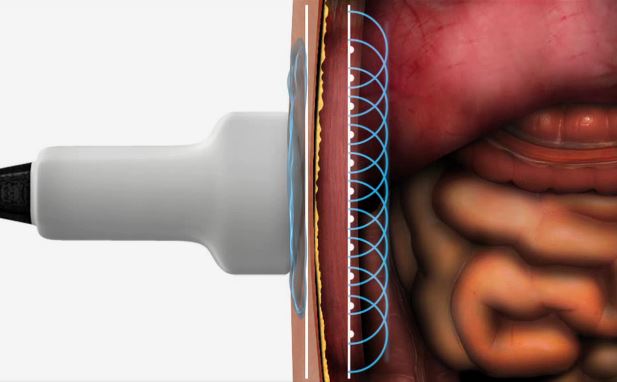

Library > Sonography > Sonography Fundamentals > Ultrasound Physics 1
Try Simtics for free
Start my free trialUltrasound Physics 1

Materials Included:
-

-

-

-

Check our pricing plans here
Unlimited streaming.
A basic knowledge of ultrasound physics and instrumentation is vital to ensure the correct application of ultrasound for both diagnostic and therapeutic interventions. Understanding the physical attributes of ultrasound waves and how images are generated will enable you to obtain optimum images and thus help to prevent misdiagnosis.
This module (a companion to Ultrasound Physics 2) guides you through introductory ultrasound physics principles including sound waves, attenuation, and transducer function. It contains many illustrations and animations to help you understand important concepts that will help you throughout your sonography career.
Ultrasound Physics 1 is suitable for all practitioners of ultrasound, anyone interested in learning about ultrasound physics. It is a valuable learning resource for anyone getting ready for the ARDMS Sonographic Principles and Instrumentation (SPI) Exam.
You’ll learn
- ultrasound physics terminology and definitions
- the basics: units and conversions, scientific notation, exponents and logarithms
- the properties of sound waves, wave motions, concepts such as acoustic impedance and attenuation, and the laws of reflection and refraction
- about power and intensity
- about factors that affect images such as bandwidth, Q factor, beam configuration, slice thickness
- transducer construction, types, frequency, and the different beam shapes
- how an ultrasound system works
- and much more (see Content tab for more detail)
- Discuss units and conversions
- Discuss metric system
- Discuss scientific notation
- Discuss exponents and logarithms
- List and describe the properties of sound waves
- Discuss the parameters of sound waves / speed of sound
- Diagram and compare wave motions
- Diagram and explain mechanisms of attenuation and attenuation coefficients
- Explain acoustic impedance
- Discuss power and intensity
- Explain and diagram the laws of reflection and refraction
- Discuss Snell's Law
- Explain pulse echo principle
- Compare pulse wave to continuous wave
- Discuss crystal diameter and thickness
- Define bandwidth and how it affects an image
- Define Q factor and how it affects an image
- Discuss the types of resolution
- Describe how beam configuration affects image
- Discuss Huygens' Principle and how it relates to phase
- Compare focused and unfocused transducers
- Discuss slice thickness and how it affects the image
- Discuss the role of piezoelectricity in the production and processing of ultrasound
- Diagram and explain transducer construction
- Describe the effects of changing transducer frequency
- Compare types of transducer construction and application
- Discuss the types of transducers
- Apply pulse echo to system design
- Discuss the effect of TGC, gain, and power
- List and describe equipment modes
- Diagram and describe scan converters
- List and describe image recorders
- Discuss parts of ultrasound system
- Explain filters, gates, color maps, pre, and post processing
The SIMTICS modules are all easy to use and web-based. This means they are available at any time as long as the learner has an internet connection. No special hardware or other equipment is required, other than a computer mouse for use in the simulations. Each of the SIMTICS modules covers one specific procedure or topic in detail. Each module contains:
- an online simulation (available in Learn and Test modes)
- descriptive text, which explains exactly how to perform that particular procedure including key terms and hyperlinks to references
- 2D images and a 3D model of applied anatomy for that particular topic
- a step by step video demonstration by an expert
- a quiz
- a personal logbook that keeps track of all the modules the learner has studied and how long
For more details on features and how your students can benefit from our unique system, click here.







